Sennheiser IE900 Flagship In-Ear Monitors – Orchestral Majesty
Sennheiser Ie900 is the $1499 USD flagship IEM designed by the ultra-popular audio company Sennheiser, which comes with both balanced and SE cables, a single dynamic driver, and with one of the best designs we’ve seen out there. Today we will be reviewing them, and also comparing the Ie900 to other high-end IEMs and flagships, in a battle of the best, the list including HIFIMAN Svanar (1999 USD), Unique Melody Maven PRO (1799 USD), Dita Audio Perpetua (2999 USD), FiR Audio NE4 NEON 4 (2299 USD), Ambient Acoustics MAD 24 (3499 USD) and Sennheiser Ie800 (999 USD). At the moment of writing today’s review, Sennheiser Ie900 can be found on the Sennheiser official website on sale for $999 USD, and it is part of the Amazon Black Friday deal for the same $999 USD price.

Introduction
Sennheiser has always been one of the most popular audio companies, with both entry-level, inexperienced users purchasing their first headphones from Sennheiser, a good starter model being the 5XX series, or HD600, while professional musicians, audio engineers, and even some of the most picky audiophiles using and relying on the HD800S headphones to give them endless amounts of fun. Even better, when it comes to IEMs, the old Sennheiser Ie800 has been like a gateway for me and my ears, and it is one of the main reasons I started reviewing, and I got more serious about audio. I was a student, and could barely afford to purchase the Ie800, but it made me so happy to have those tiny IEMs, which sounded really sharp, detailed and clean, providing some of the best performance one could desire. Nowadays Sennheiser found ways to improve on what IE800 was and make an IEM that makes everything even better, leading to the Ie900 we have here today. As an Amazon Influencer, I earn from qualifying purchases, and using the purchase links in my reviews helps me maintain this website and youtube channel.
I’d like to thank Sennheiser for providing the sample for this review, in exchange for my honest opinion. We are not receiving any incentive for this review and Audiophile-Heaven has no affiliation with Sennheiser beyond this review. This review is a description of my personal experience.
Product Link
You can grab one from www.amazon.com here: https://amzn.to/3GaOlZV
If you’re in the UK, you can grab one from www.amazon.co.uk here: https://amzn.to/3sDqA9L
And if you’re from Europe, you can grab one from www.amazon.de here: https://amzn.to/3Gd862P
Build Quality/Aesthetics/Fit/Comfort
The outer design is a crowning of engineering, with a precision-manufactured aluminum housing, to protect the dynamic TrueResponse transducers, the new dynamic drivers designed by Sennheiser, which are at the heart of the innovative X3R tech. The design promises to deliver an artifact-free “Sennheiser Sound”, which can be found in full-sized headphones 8 times as large. The company promises an intense listening experience, which allows you to experience the deepest corners of your music collection, anywhere.
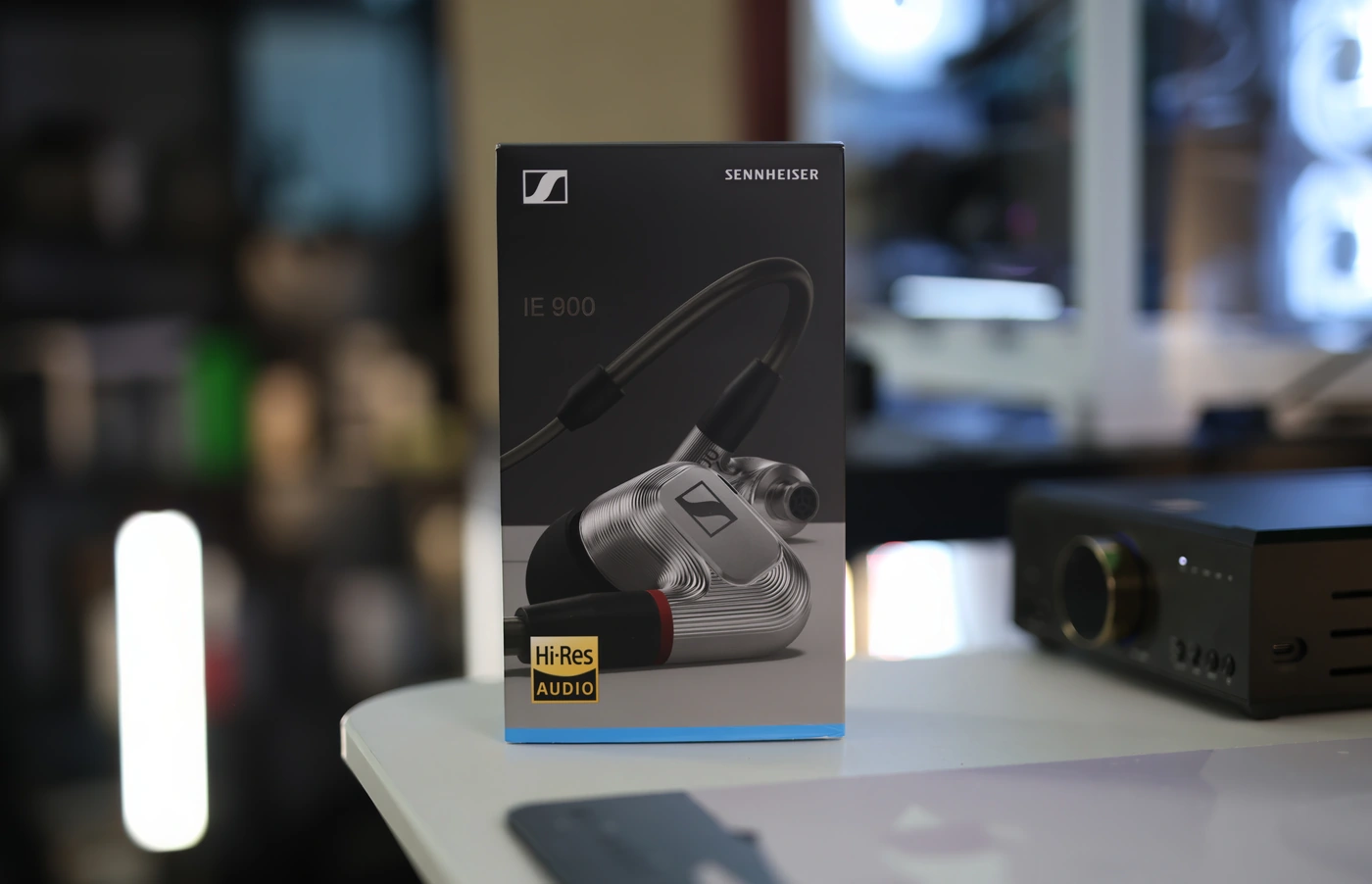
Despite the deceptively diminutive size of the driver, Sennehsier focuses on delivering a full-sized experience in their IEMs, and Ie900 sports a 7mm True Response transducer, which can be found in various forms throughout sennheiser professional and consumer focused in-ear products. As most high-end IEM producers have been trying to find new ways to improve on the resolution, clarity and detail of the sound of their products, Sennheiser stays true to their origins and instead of developing a large number of drivers in a single acoustic enclosure and solve the artifacts introduced afterwards (phase incoherencies, crossover problems, increased distortions), they decided to deploy a single, high-performance dynamic driver to rule them all.
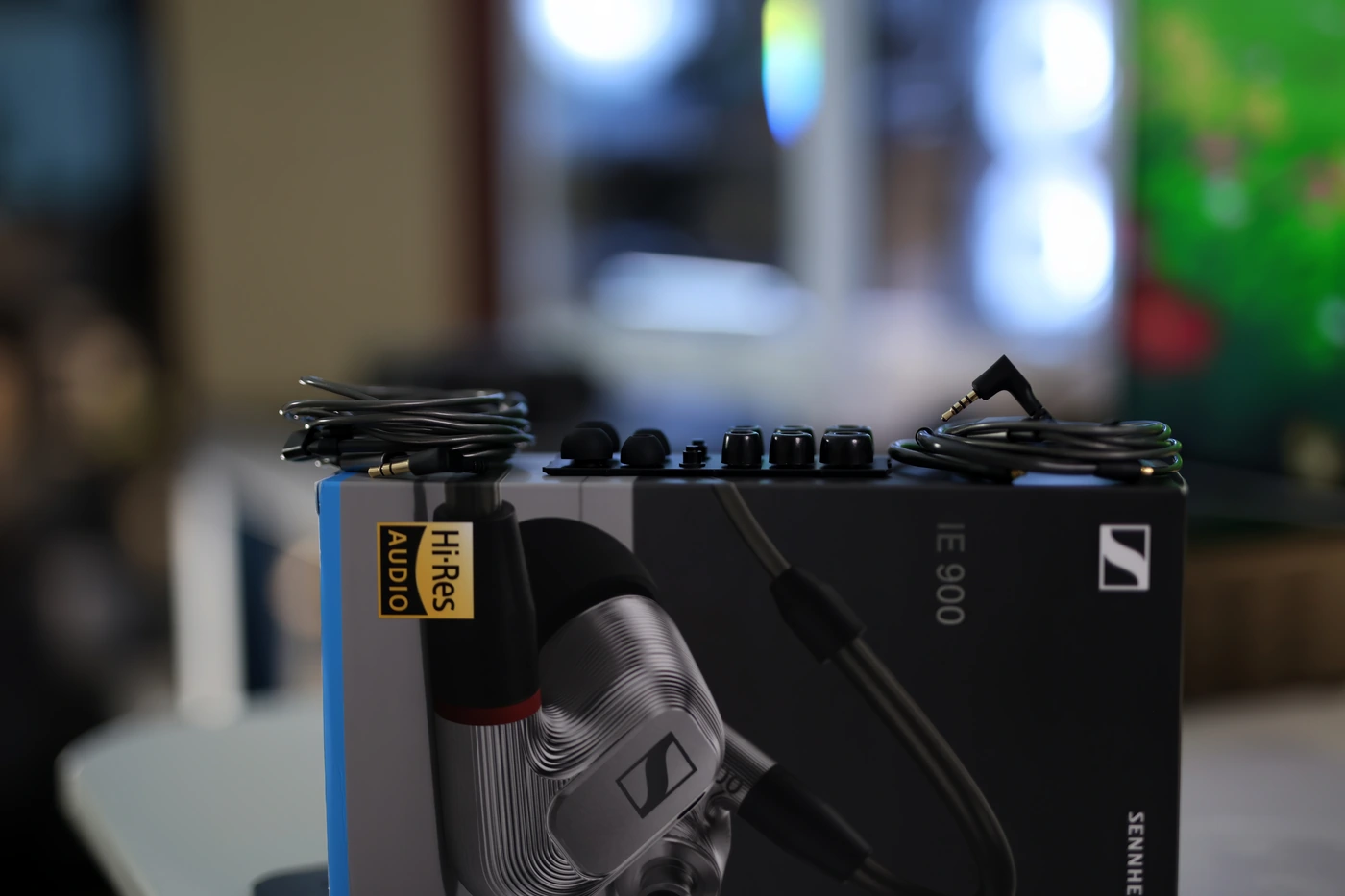
The dynamic driver is designed and made in-house by Sennheiser, and the X3R technology is named as such because it employs three helmholtz resonator chambers, which are precision drilled in the aluminum chassis of IE900, and placed between the diaphragm and the nozzle. To make the treble as smooth as possible, Sennehiser employed an acoustic vortex, a complex shape that scatters the excessive energy, resulting in a measurable effect of lowering the distortions and improving on the treble smoothness. If you’ve ever been to an opera or theater or any kind of building that is acoustically designed for a large orchestra to play in, the interior of IE900 looks as intricate and has chambers to separately improve on the sonic response and how pleasing the sound of IEMs are. The three chambers inside of IE900 have been individually tuned to provide the correct response between 6 to 10 kHz, to reduce the masking effect, and to allow you to hear the high-end details above 11 kHz.
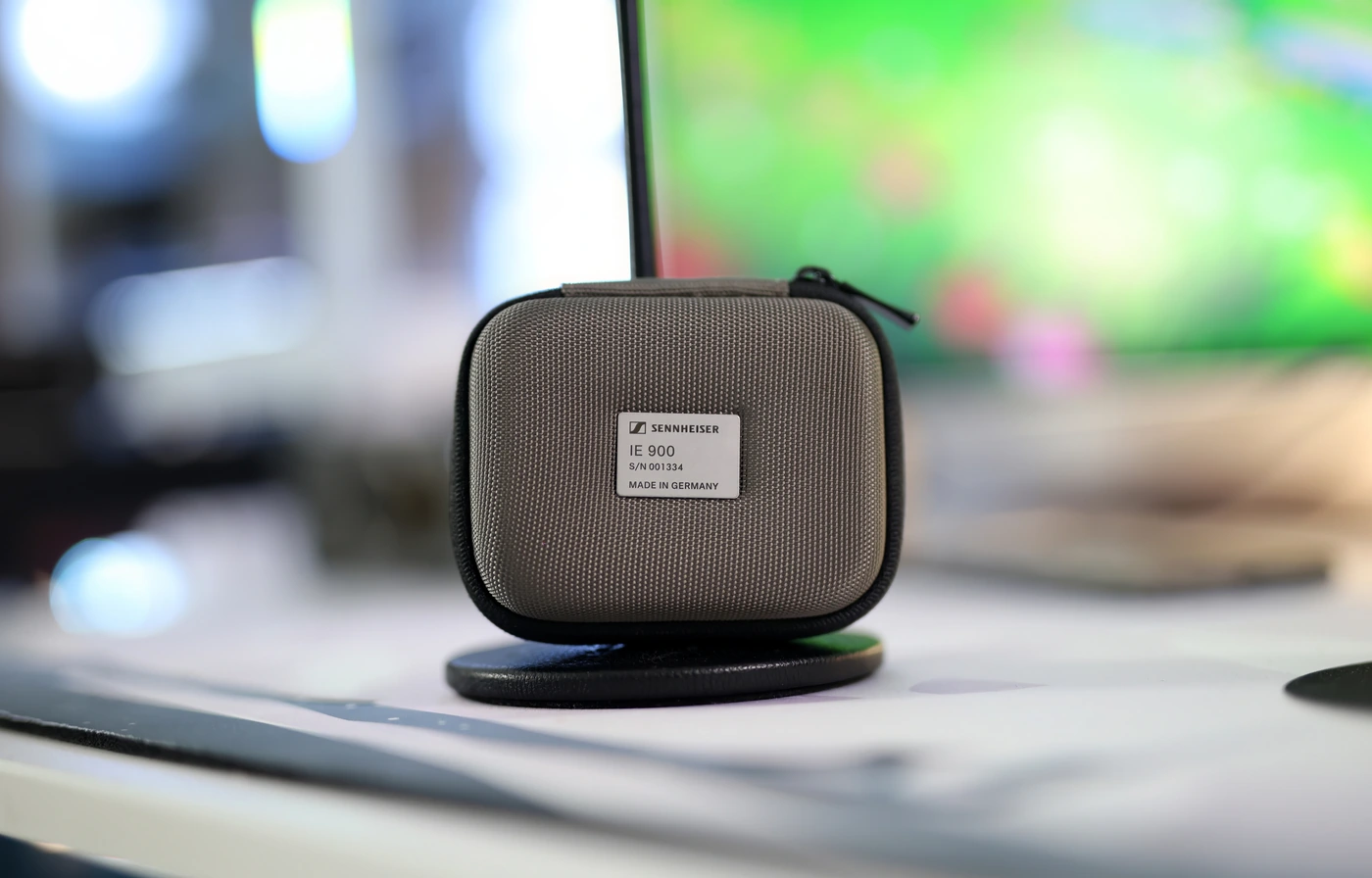
The whole point of this design is to reduce the sharpness that would otherwise mask the finer nuances and textures in music, so the three acoustic chambers are treated like a sports car, using every nanometer of the IE900’s chassis to reach the ideal sonic response. Sennheiser considers the IE900 to be a new benchmark in portable sound reproduction, and it is an IEM developed in Germany, manufactured in their state-of-the-art Ireland factory.
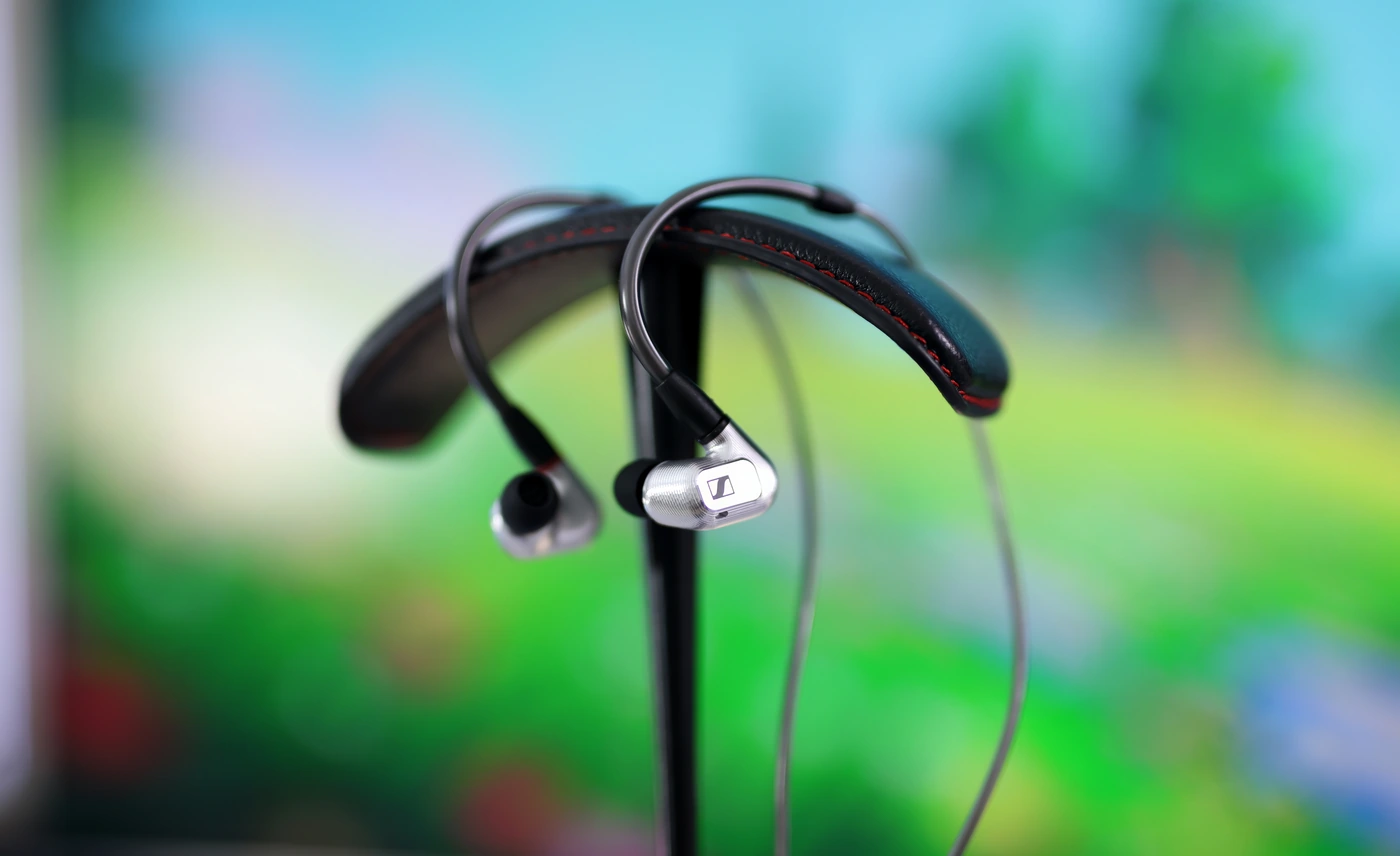
The IEMs look sleek, and they use gold-plated MMCX connectors, with adjustable ear hooks made of a solid metallic inner part, to hold the Ie900 in place while they’re inside of your ears. The THD is rated 0.05%, one of the lowest for IEMs out there, and the impedance is rated low at 18 OHMs, but just like IE800, IE900 is quite hard to drive, and it is not sensitive to source noise. The frequency response is rated incredibly high, between 5 Hz and 48 kHz. The package comes with a transport case, but also with three para-aramid reinforced cables, in 2.5mm, 3.5mm and 4.4mm flavors.
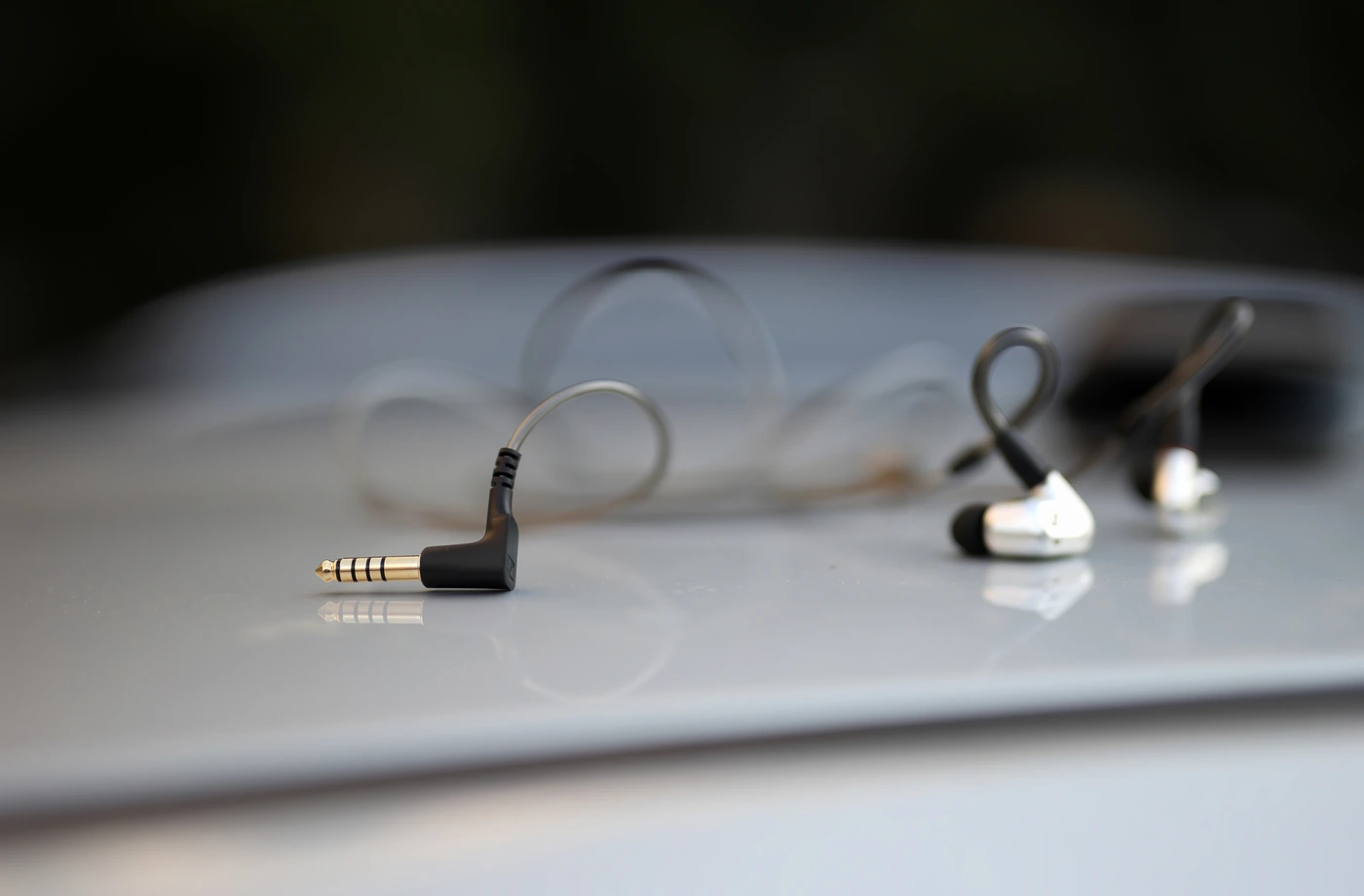
Although it may seem random, Aluminum is actually a great material to make the IEMs. First off, it is lightweight, so wearing comfort is incredibly high, it is also suited for high-precision milling, and provides a pleasing look too. The drivers are matched during an automated process, to have perfect lateral balance. The overall comfort of IE900 is improved over IE800 and all of the other Sennheiser portable earphones I tried in the past, this being the crown of their work, now IE900 being what I can consider to be incredibly comfortable, pleasing to use. The fit is super secure, thanks to the ear guides, the tips provide a good contact between the IEMs and my ears, and the IEM shells are super small, providing just what I need in terms of comfort. Ie900 is literally perfect for comfort, it is small, it is light, and it isolates well from the outside noise, with around 20 dB of passive noise isolation. Even better, they don’t leak at all, being perfect even for listening super loud while someone else is in the room as well. There will be no driver flex and no fitting issues for any listener.
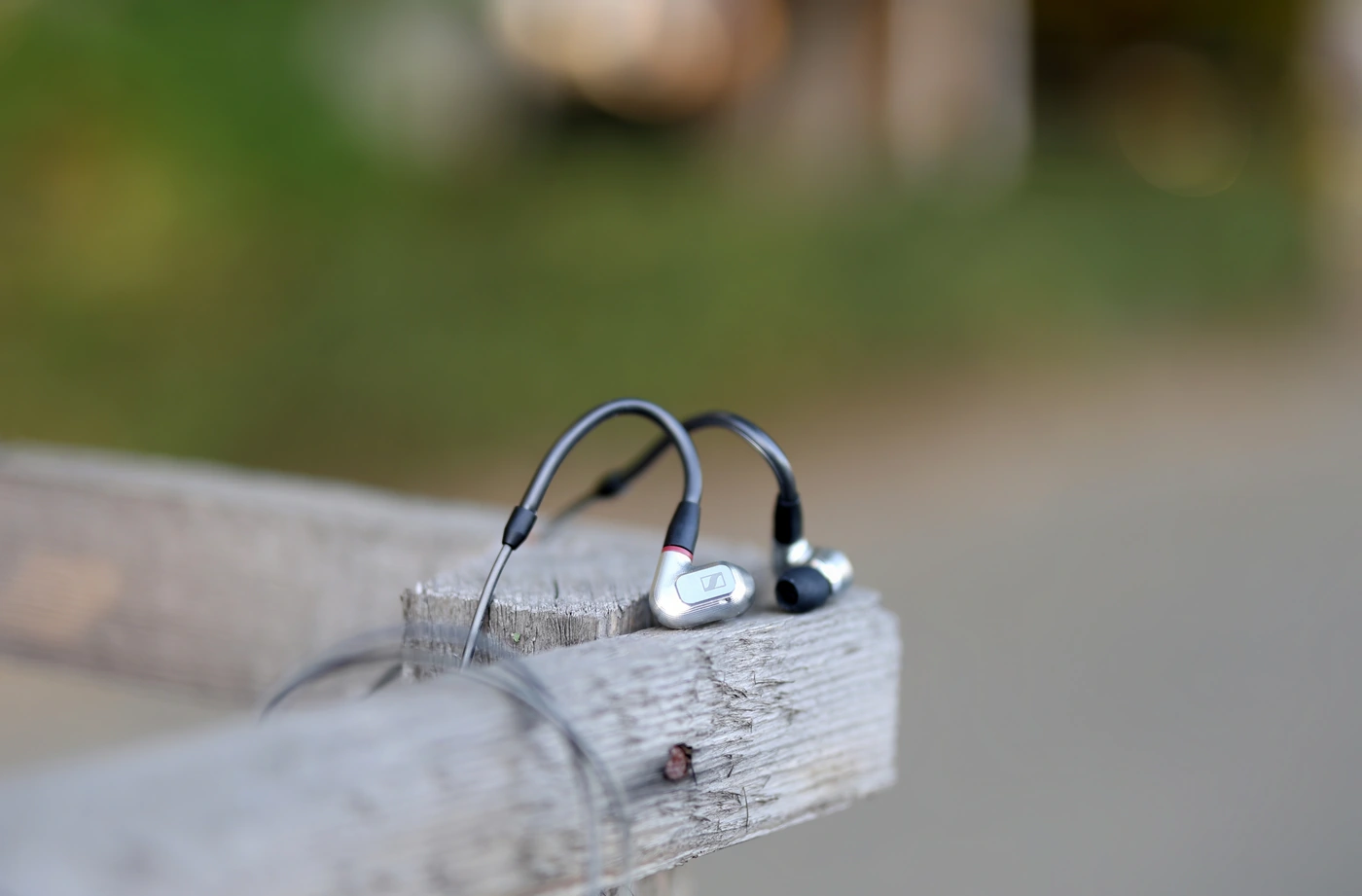
It is somewhat harder to drive the Ie900 than most IEMs out there, but they’ll still be properly driven out of portable dongles just fine. This being said, if you’re looking to get the best sound, IE900 scales well with high-end sources, including Aune S9C PRO + Aune S17 PRO, FiiO K9 PRO, FiiO Q15, JDS Labs Element III MK2 Boosted, Shanling H5, SMSL DO400, iFi Audio Go Bar, iBasso DX320 MAX Ti, Astell & Kern SE180, and Dethonray DTR1+. Having a multitude of cables means I can test both Balanced and SE based sources, and IE900 is not very sensitive to source noise, so you can use sources designed for desktop, but IE900 also sounds super neat with powerful sources, for example, with DX320 MAX TI or Q15, it sounds best at max driving power and high gain. Volume control is not a problem with most sources, as it takes quite a bit to put some loudness into IE900.
Sound Quality
The sound of IE900 combines everything that IE800 did right, with everything HD660S2 does right, with everything I always wanted to have in an earphone, creating a magical experience I can only call perfect. The tuning is really natural, the midrange sounds open, clean, sharp and very detailed. For voices, violins, guitars, everything, the sound has a strong nuance, and Ie900 allows the song to shine through imposing their character as little as possible in the midrange, so it is possible to get a multitude of signatures with them. The bass is always strong, with a strong sub bass, but controlled and free of distortion, while the treble is sharp, cuts steeply and shows / highlights how the album is supposed to sound, effortlessly showing where there is air recorded, space, and other cues that sometimes are crushed in earphones.
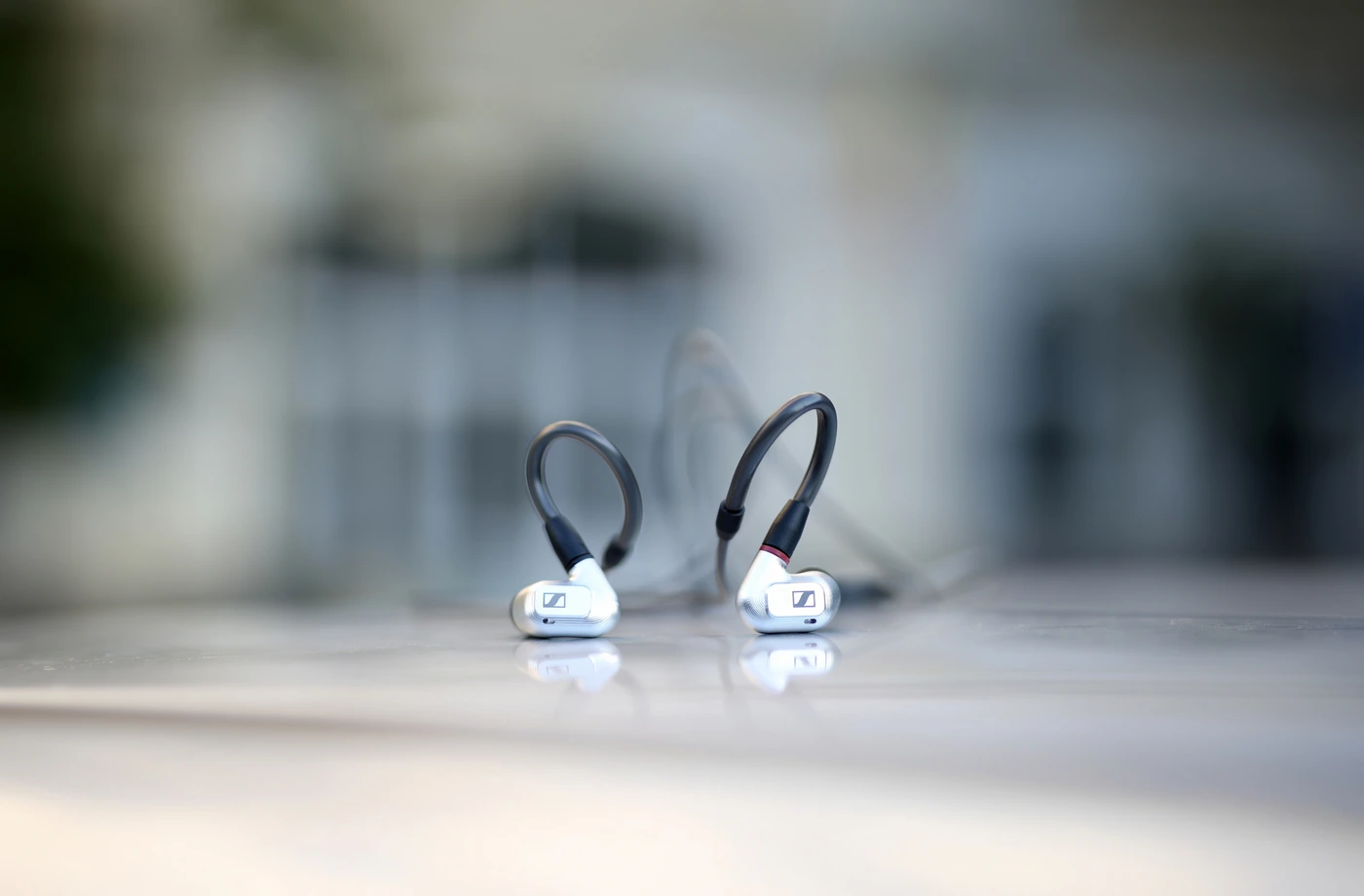
The sub bass is the part that everyone loved in IE800, and IE900 retains a lot of that magic, having a thunderous sub bass when it is called for, providing a clean, controlled and zero-distortion sub low end that can punch harder than most IEMs and headphones out there. It feels like there is a high-end subwoofer embedded in the Ie900, and you never think to yourself about the size of the driver and the IEMs, it is a bass that I can safely say reaches 20 Hz, and can provided nuance, control and distortion-free information down there. The speed of the bass is insane, and generally IE900 is one of the very few IEMs that can fully satisfy the need for precision for technical death metal, deathcore and trancecore. This also helps a lot with large orchestral compositions where you get a lot of low-end harmonics from instruments, Ie900 allowing textures to stay crisp, controlled and clear.
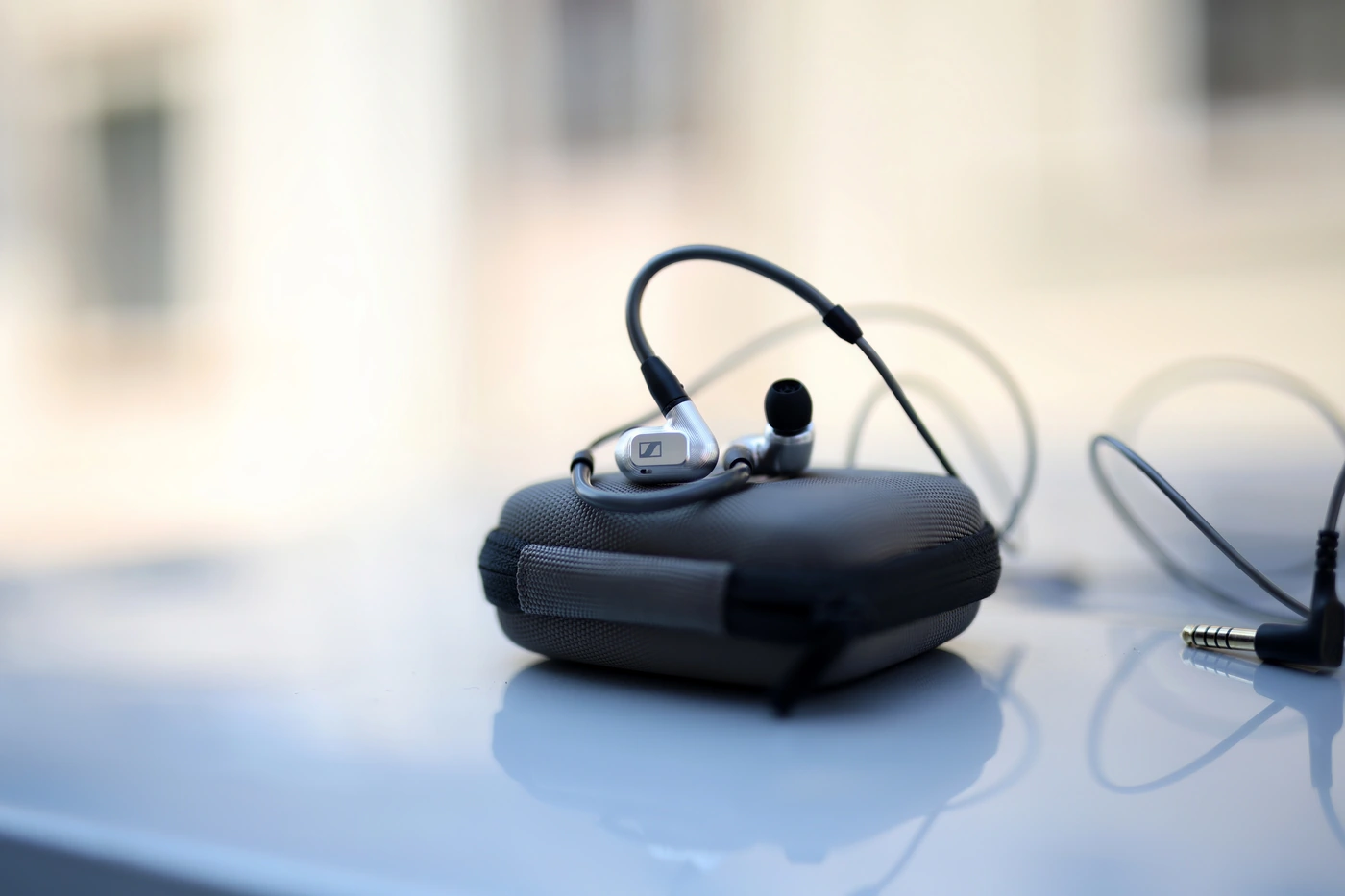
The upper bass and lower midrange are kept neutral, so the sub bass is what drives substance and presence in the impact, while the midrange is generally kept tidy, in line and controlled, Sennheiser avoiding the masking effect that we typically see when an IEM tries to add warmth where it generally isn’t designed to be. This means that, like an anti-veiling effect, IE900 sounds controlled and sharp, edging on neutrality, but still with a hint of warmth taking from that extra sub bass, which keeps music super punchy and enjoyable. For rock, metal, acoustic music, orchestral and pop, this works incredibly well, and it is a clever way of adding detail without making things too cold or bright, IE900 being quite efficient at providing a clean and pleasing musical experience. I keep talking about this, but only recently there have been a wave of IEMs that make the lyrics and voices really easy to understand, giving the impression that some of the older acoustic designs sounded muffled in the voices, with Ie900 being the one that started the trend, but the most recent one that I am reviewing. You can literally hear what the growls and screamed parts in death metal, deathcore and thrash metal are saying, you can understand lyrics in opera and complex choir pieces. As we age, we tend to change our taste, and I find myself listening to a bit more classical than I was before, Ie900 proving to be perfect for classical, it can show textures easily, making all music actually textured without being fatiguing.
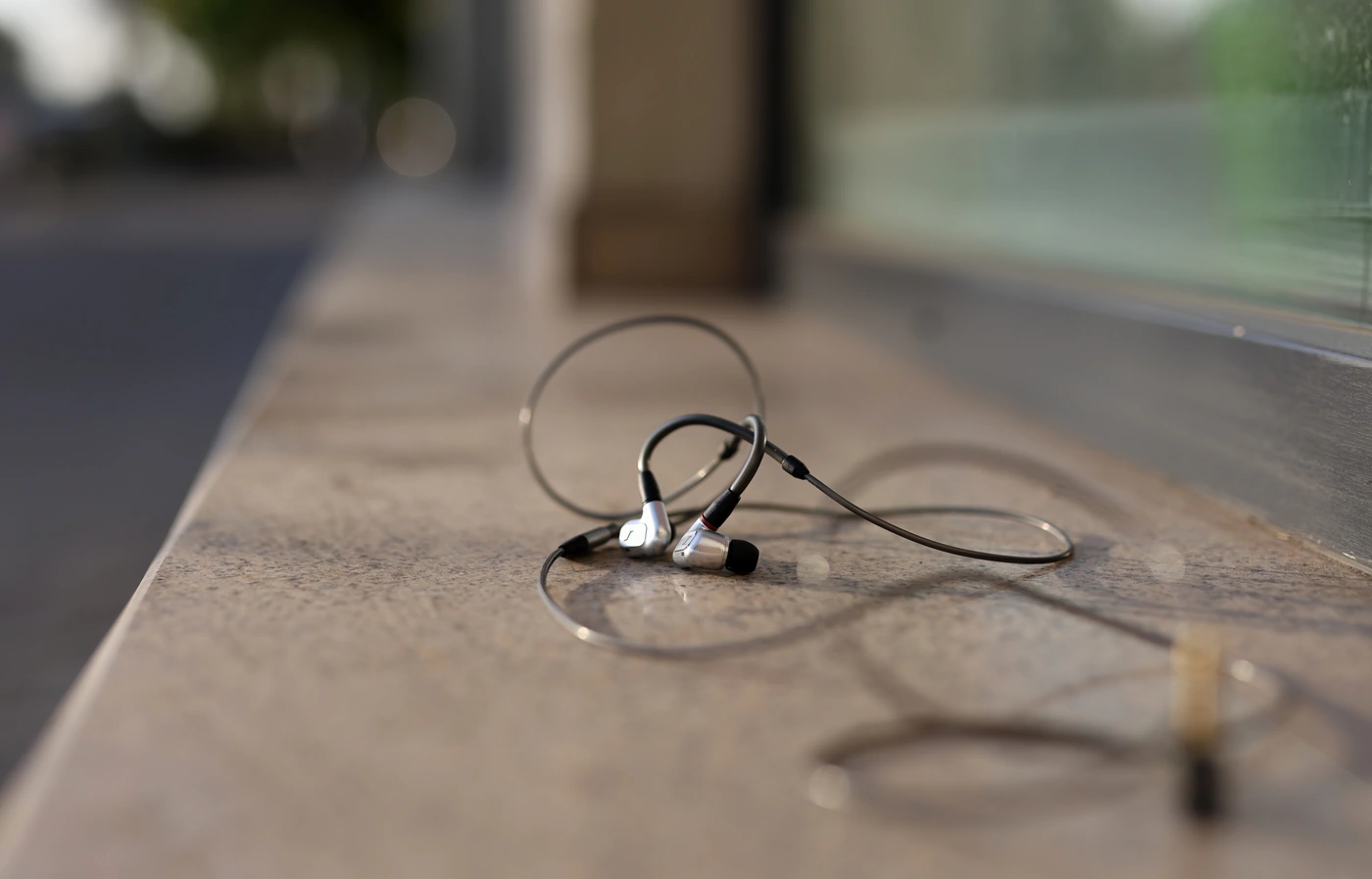
Speaking of fatigue, the upper midrange and lower treble are very different from what we’ve seen on Ie800, with Ie900 being neatly kept together, sharp, but not fatiguing in any way. While with most IEMs, I do tend to feel some fatigue after a while, Ie900 has no such fatigue, it can sound like super resolution sounds, without the usual harshness or listening fatigue associated with it. To give you a quick example, it has a resolution similar or even better than Final Audio A8000, but is much easier to enjoy as it is nowhere near as harsh or bright. This being said, the upper midrange does have an increased presence over the lower midrange, and the sound is tastefully bright, sparkly, airy and wide. The width of the soundstage is bigger than what I hear on Sennheiser Hd 660 S2, but not quite as big as what I heard with HD800S. Sennheiser designed the Ie900 to have what we all adored with Ie800 though, that surgical level of instrument separation, which allows you to hear absolutely everything, every single note, every single piano key, every single bit of your music, and still keep it well defined.
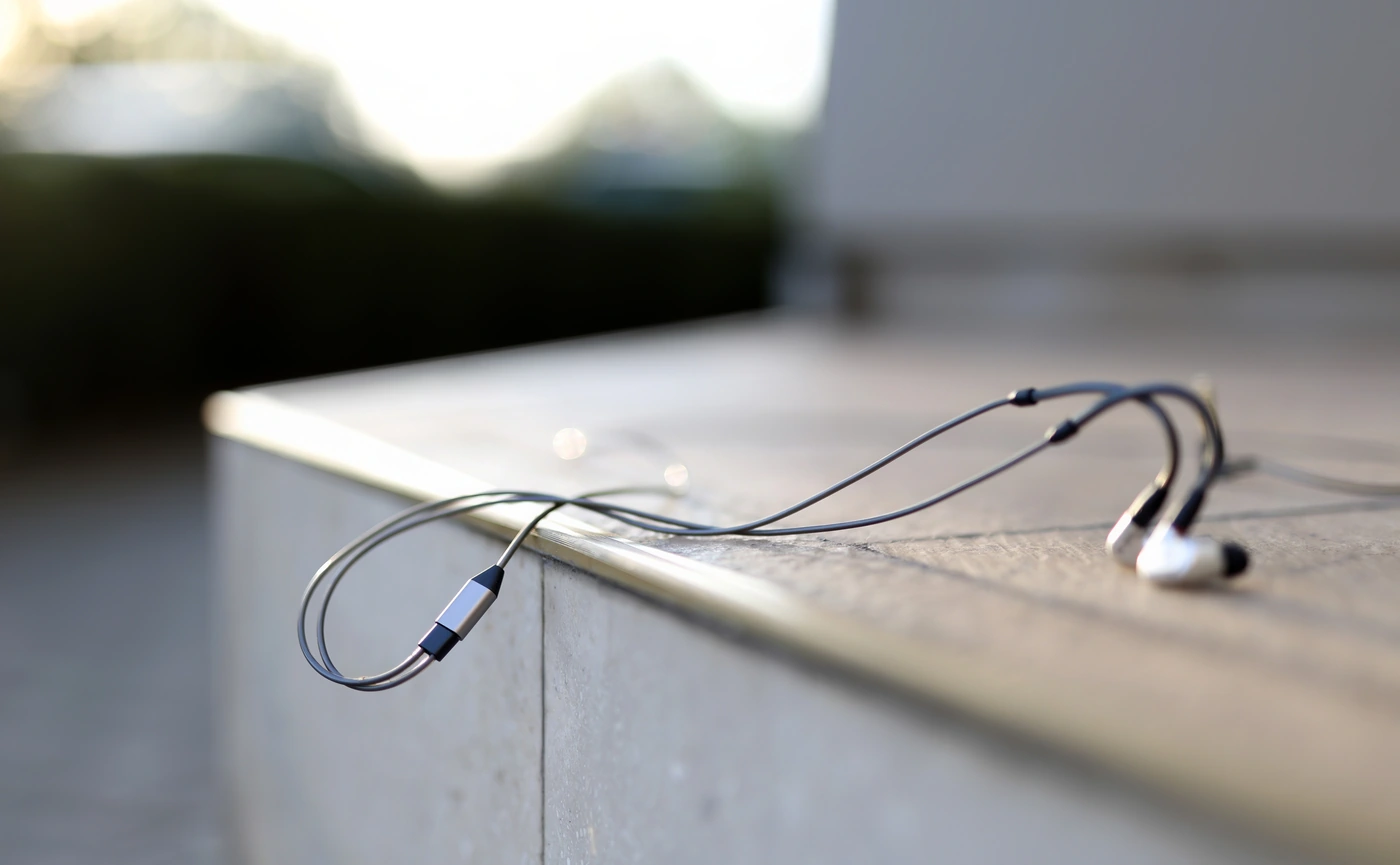
The treble’s body’s natural, with a very slight hint of brightness, although the texture is mostly natural, well defined, and the treble has a neat way of extending up to the highest octaves without forcing this onto the listener. It feels like Ie900 was designed to sound complete, and this cohesiveness is really something you only notice when you listen to it after a selection of multi-driver IEMs, Ie900 is not just complete, it is perfectly in phase, it no part of the sound is faster or slower, no part comes at a wrong time. I had the honor of listening to a lot of classical music now, and you can immediately tell when the orchestra didn’t learn and master a piece before the show, and the same happens with most multi-driver setups, there is that crossover point where you can hear the two drivers playing the same frequency but in a different voicing, and the texture, speed and character changes for each driver. Ie900 deals with all those problems, and instead of having a lazy driver, Sennheiser did what we always hoped for, they made the bass as quick as the treble, giving the entire sound this super dynamic, super detailed sound that’s fast and punchy.
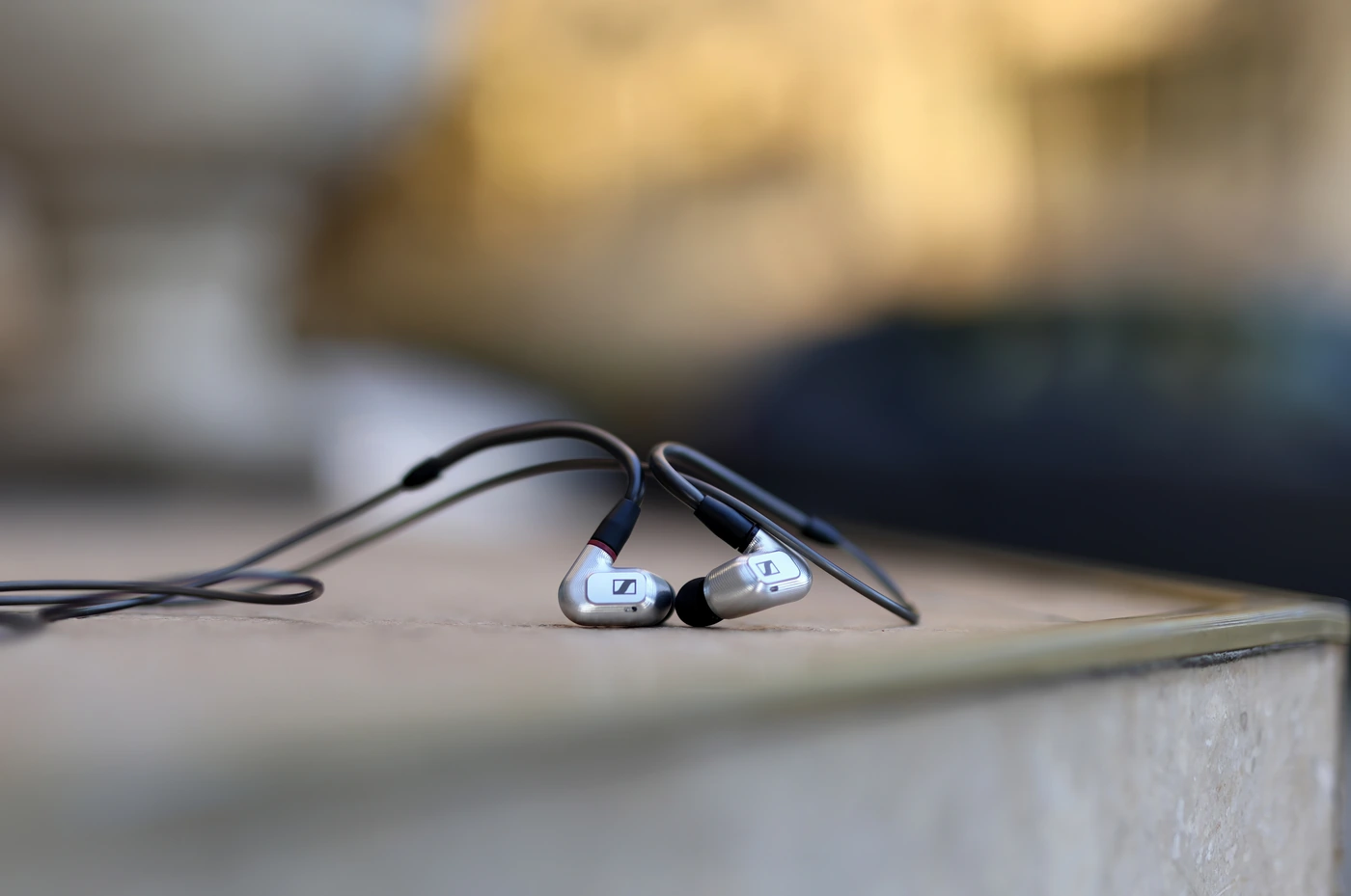
The timing of Ie900 is perfect, this is an IEM that can stop at the drop of a needle, it is an IEM that can show what is one the highest dynamic range in an earphone, especially for one with a driver this small, and it offers one of the best control, lowest distortions possible physically. Right now, if you go out and try to get a pair of speakers that comes close, you won’t be able to find anything without spending over 10.000 USD, or even more, while IE900 shows the precision, striking elegance and dynamic range that you typically only get with real, live music. I generally don’t think there is such a thing as a perfect tuning or signature, but if you like a sound with a strong sub bass, a very natural but neutral tuned midrange, and a sparkly, airy upper treble, so a U-Shaped signature, this is as close as it gets to perfection.
Comparisons
Sennheiser Ie900 vs FiR Audio Ne4 Neon 4 (1499 USD vs 2299 USD) – The shape of IE900 is more ergonomic, it takes less space and feels more natural in my ears. The sound leakage is much lower, since it doesn’t have an open port like Ne4, it also isolates much better from the outside noise, and I am willing to say that IE900 is less sensitive to source noise, while NE4 can be considered sensitive as it shows hissing and noise more easily. With Ne4, the sound is warmer, thicker, and has a more bassy sound, with a sharper increase in the upper treble and lower midrange, and a less present upper treble. By comparison, Ie900 sounds more detailed and more nuanced in the sub bass, although the sub bass is lower in quantity, and the bass is considerably more neutral, but also more nuanced. Ie900 is not as warm and thick sounding as NEon4, and the midrange is more detailed, voices are cleaner, and the whole resolution is quite a bit better. You can actually easily hear the driver speed difference between the dynamic drivers and the balanced armatures of the Neon 4, each driver having a different character, that in theory would make all music sound more natural, because it would try to reproduce the textures naturally produced by the instruments more faithfully, but IE900 ends up doing that a bit better, the driver is just faster overall and can reproduce each minute detail better. The only drawback here is that the Ie900 sounds neutralish / U-Shaped in the overall tuning, so that precision and clarity comes at the cost of it not being colored for warmth, which Ne4 is. Right now, the Ie900 can be found at 999 USD right now, which is less than half of Ne4’s price, but it has a bit of extra detail, so above 1000 USD, we do start to see the law of diminishing returns which typically applies to flagships.
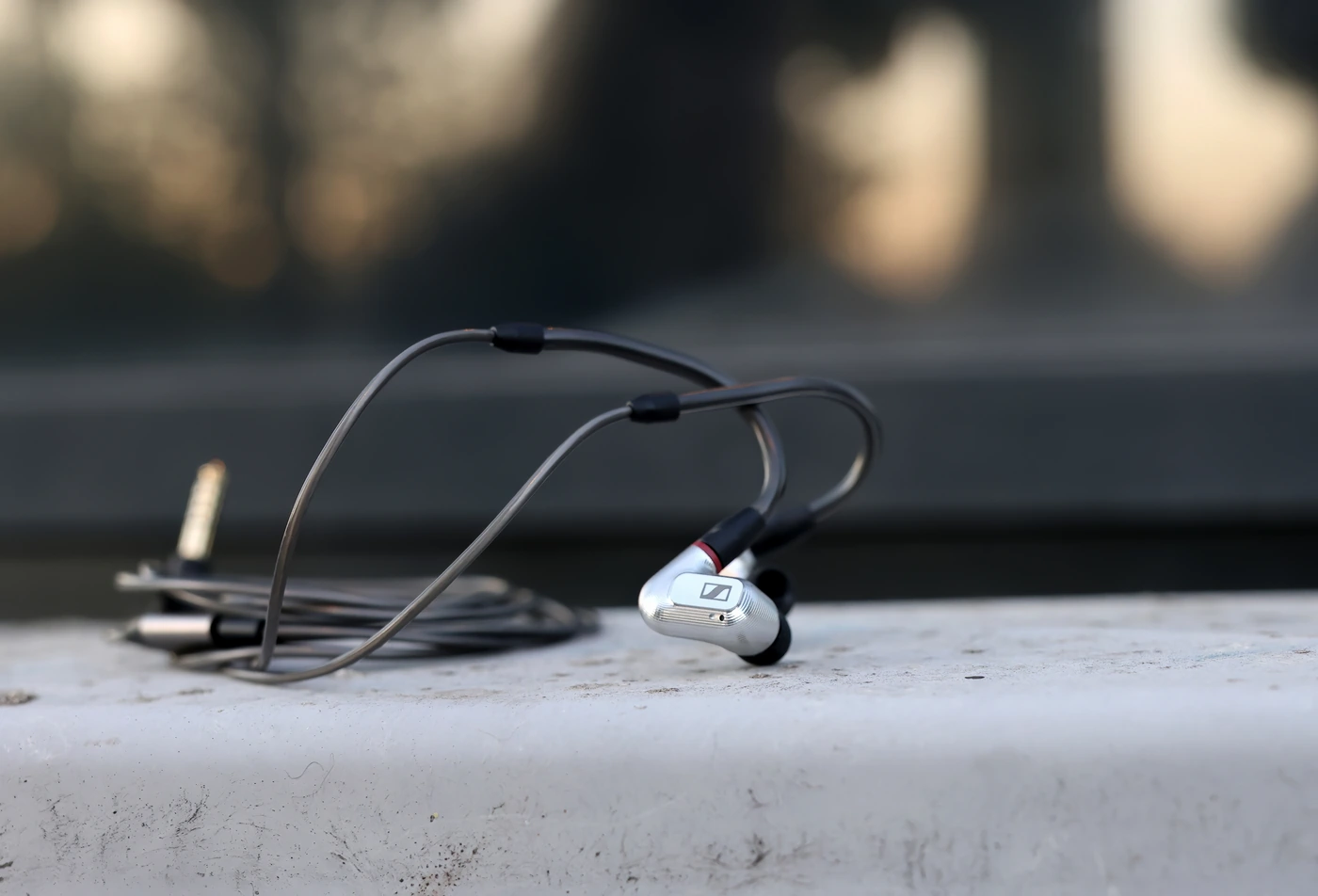
Sennheiser Ie900 vs Ambient Acoustics MAD24 (1499 USD vs 3499 USD) – The small shells of IE900 are understandably more comfortable than MAD24’s super large shells, but Ie900 has just one dynamic driver, which is also quite tiny in size, while MAD24 has literally 24 drivers playing in each ear. The passive noise isolation is higher on MAD24, but they also seem to leak a bit more, the default cable of Ie900 is better and there are three of those cables, while MAD24 comes with just one which is also single ended. The package is a bit more impressive on MAD24, but sonically they are quite different. IE900 sounds more natural in the midrange, has a stronger detail extraction ability, a wider soundstage, better instrument separation and a cleaner overall sound, while MAD24 sounds considerably thicker, more congested, and warmer, bassier, with a more forward midrange, and a smoother treble. IE900 sounds like the sound is unveiled, but that results in a colder tonality and a brighter tonality too, while MAD24 sounds meatier, heavier and it feels like more air is moving in their sound, so deeper too, as a result. The sub bass extension is actually quite a bit higher for IE900, which is particularly good at this, while MAD24 is better suited if you tend to like a more raw sound and a warmer tuning. Both are quite detailed, and MAD 24 is the detailed, but natural sound, while Ie900 is surgical, it can cut instruments and reveal what each instrument is playing, it can show you the secrets you never knew in your music, and the price for it is a third of the price of MAD 24, so you’re in for a higher price / performance ratio too, if you like the idea of a brighter sound and of a U Shaped sound.
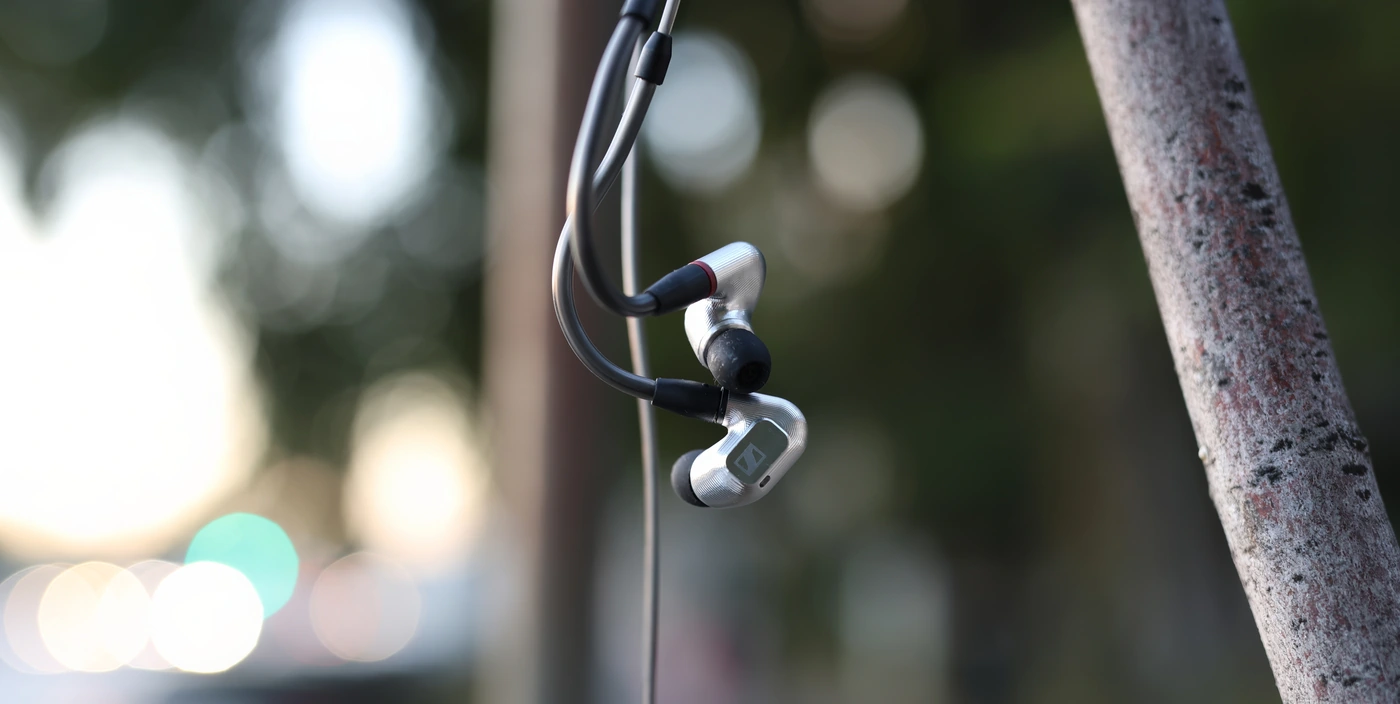
Sennheiser Ie900 vs Dita Audio Perpetua (1499 USD vs 2999 USD) – Dita Perpetua is one of the few IEMs out there that can compete with IE900 in terms of design and comfort, and both are super comfortable. The shells of the Perpetua are a bit larger than the shells of the Ie900, but they both sit really nicely in my heart, and both are ergonomic. The cable of Dita Perpetua feels better and likely also sounds better than the cable of Ie900, but it is more rigid, but Ie900’s cable has hard ear guides, so both package and the cable and the comfort is a tie here, both are good, with some minor things to mention. Driving both is easy enough for IEMs, both have a nice sound, but the tuning is incredibly different, they are almost polar opposites. Where Ie900 is incredibly engaging, punchy, dynamic and detailed, cutting instruments and revealing them with surgical precision, Dita Audio Perpetua is smooth, laid back, thick, warm, fuzzy and relaxed, the only thing they have in common being the excellent resolution, clarity and precision both carry. I like listening to both, but Perpetua is the kind of IEM that gets more fun the more you listen to it, and it needs quite a bit of time to get used to, or you need to be sure you enjoy a relaxed sound, while IE900 is the kind of IEM everyone likes and enjoys, it is juicy, wide, holographic, engaging, and impresses right from the start, becoming better and better the more you listen to it. You should be happy with either really, regardless of your taste, both will satisfy nicely, but Ie900 being a third the price of Dita Perpetua, it really shows a strong price / performance ratio and Sennheiser really stays super competitive even in today’s market.
Sennheiser Ie900 vs Unique Melody Maven PRO (1499 USD vs 1799 USD) – The shells of Maven PRO are quite a bit larger, and while most of the other IEMs in today’s list have no driver flex, Maven PRO in particular can get flexy if you pull it too fast out of your ears. The cable of the Maven PRO is slightly better than the cable of IE900, but the comfort of the IEMs is so different, that IE900 wins the build and ergonomics part. Driving both is easy, and driving Ie900 is a bit harder, Ie900 being less sensitive to source hissing and to source quality. As both can be quite good for all music styles, it is worthy to mention that Maven PRO is by all definitions not a warm or smooth sounding IEM, and I even had a Romanian friend come to me and ask me to give it a listen because he heard from some folks they were warm. Maven PRO is very bright, clean, sharp, acoustically capable, but also has a strong sub bass, so in theory it sounds like the tuning and signature of the two is similar, but they are different when you actually listen to them. Ie900 has the kind of quicker, more precise bass that keeps it up better with fast death metal, technical death metal or trancecore, while Maven PRO has a larger overall bass that includes the mid bass and very slightly the upper bass, which works a bit better for Jazz and slower music like rap. The midrange is more forward on IE900 which sounds cleaner in the mids, and makes lyrics, and spoken words easier to understand, and it has a better instrument separation, plus IE900 is more cohesive as the driver has the same speed and impulse response for all instruments, while Maven PRO tends to have a different speed and tuning for each driver, and that can be heard at times, especially in electronic music where parts of a texture can move and sound faster in the treble than the bass. The treble of the two is bright, but IE900 is less harsh and less fatiguing, while Maven PRO depends on the source and music material to stay enjoyable, and will show recording mistakes, and play them as mistakes. IE900 does not mask mistakes, but can make most music more enjoyable, it simply does not get fatiguing even if the music is incredibly bright.
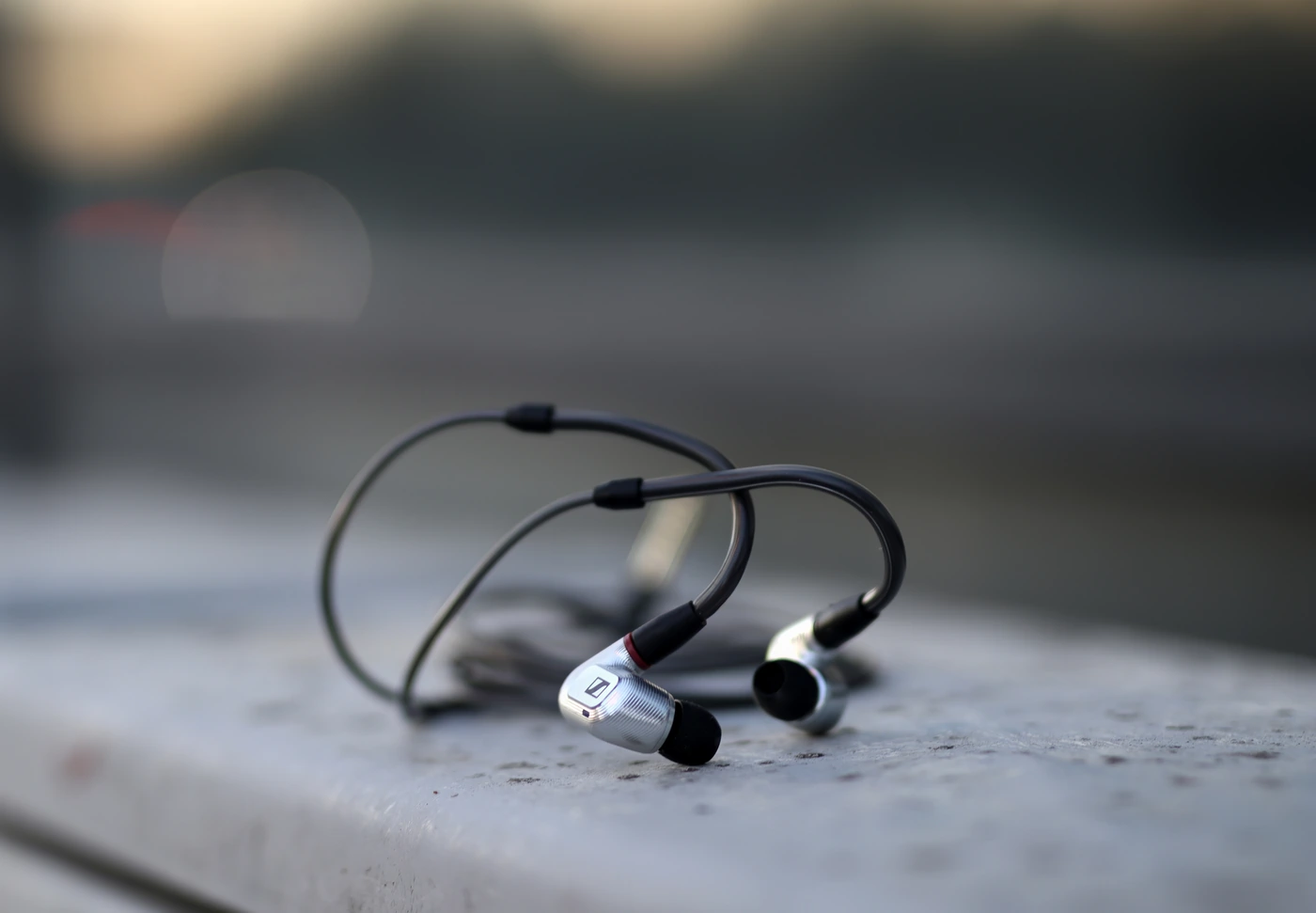
Sennheiser Ie900 vs HIFIMAN Svanar (1499 USD vs 1999 USD) – HIFIMAN always knows how to make a really awesome sounding IEM, but also an ergonomic one, and Svanar is the only IEM in today’s list literally as comfortable as IE900. In fact, it feels like Svanar drew some inspiration from the IE900, as it also has one dynamic driver, but the cable of Ie900 is better, and there are three of them, plus the package is more compelling, as the transport case will scratch less than the case of the Svanar. Sonically, they are different, Svanar is more neutral, and doesn’t have the bass uplift of Ie900, it does not have as much sub-low extension, but Svanar stays more linear and more tonally accurate and correct, while IE900 has the ends increased in presence, which makes it more forward and a bit more dynamic and engaging. Svanar tends to have a stronger detail and resolution, it is a bit cleaner, and more capable of revealing texture, while both have outstanding instrument separation. Both have excellent dynamics, and IE900 tends to win the heart of those who want a U-Shaped signature, the sound also has more of a wet character, which makes it splashy instead of harsh, while Svanar tends to show music as it is, as it was recorded and as it is intended to be played, showing bright and harsh sounding instruments as bright and harsh, while smoother and leaner instruments sound smooth and lean. I would pick Svanar for mixing, mastering and studio work, while IE900 can beautify music a bit more, while still having a very similar resolution and clarity. While the cable of the Ie900 has a better construction, I know from you my readers that some people avoid the solid metallic guide style of ear hooks, so Svanar may be a good option for those who want a simple wire to go around their ear.
Sennheiser Ie900 vs Sennheiser Ie800 (1499 USD vs 999 USD) – Sennheiser made the IE800 many years ago, and in fact, it will turn 10 soon, so it is interesting to see how the company evolved over the years. The first thing you will notice here is that the comfort has improved greatly, and I never had great comfort with IE800, this having been the main reason I gave up on using it many years ago. Ie900 is a totally new, standardized IEM that you can use with aftermarket tips and cables, and it just works, providing music lovers with an ergonomic experience. There are three helmholtz resonator chambers inside of the IE900, while IE800 had two helmholtz resonators at the back of the IEM. Both are similar in driving, with Ie800 being actually a bit harder to drive than IE900 in practice. The sound is really different and it shows how Sennheiser delivers on their promises of an improved acoustic performance. IE800 sounds U-Shaped, but it is extremely so, it is sharp in the mids, a bit fatiguing and quite splashy, which makes for a colorful, but not for everyone, nor versatile listening experience, while Ie900 imposes its character way less, the bass has better control, a quicker speed, it sounds crisper and more nuanced, and it has better body. The treble of IE900 is far less fatiguing, is smoother, more airy, and has better extension above 11 kHz, without being as splashy as that of IE800, so the new variant is much better when it comes to the works of Sennehsier. I would say that if you’re rocking IE800, you’d love IE900, and if you never had a flagship, this is the best started I can recommend as it is generally the most versatile and easiest to enjoy, especially if you don’t have specific need or taste, it will fit most people like a glove and feed you fun like a little musical cake.
Value and Conclusion
The value of Ie900 is about as good as it gets for a flagship-grade product, and this time around, Sennhiser made sure to have everything you may need for perfection, including an excellent fit, outstanding craftsmanship, a perfect sound in every way possible, along with a neat package. Everything, including the three cables included with the IEMs is assembled really nicely, and Sennheiser really did not skimp on any part with the Ie900, making it the flagships we always wanted to have from Sennheiser.
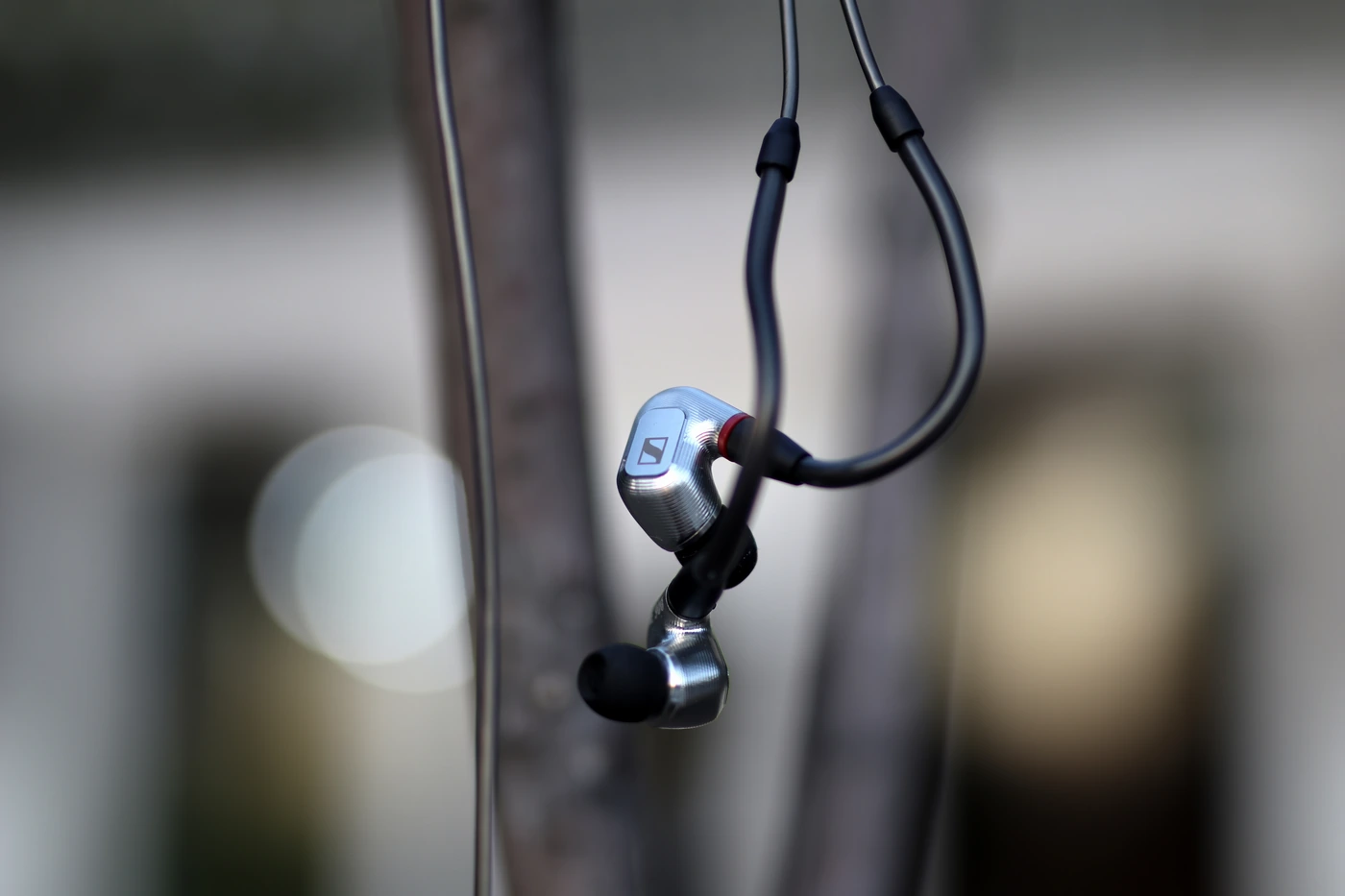
In fact, I like the overall sonics and build, and comfort, so much, that Sennheiser Ie900 officially earns a spot in the Audiophile-Heaven Hall Of Fame, and keep an eye on the Christmas lists published soon, because I have a feeling they’ll also be winning the IEM Of The Year award!
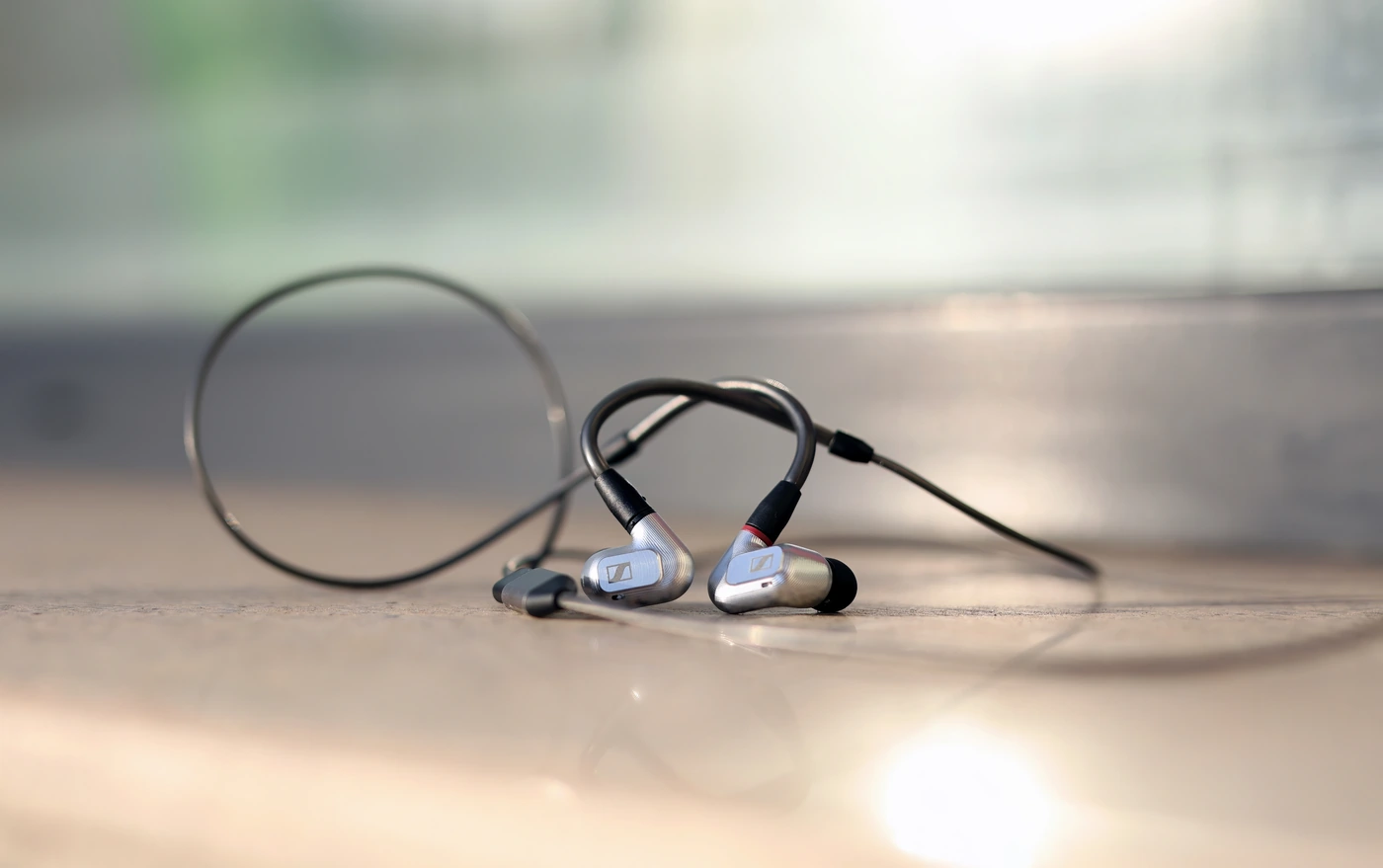
At the end of the day, if you’re looking for an especially detailed, clean, sharp and precise IEM that can sound sublime with both rock, metal, but also orchestra, EDM, pop, and basically everything in between, Sennehsier has you covered with their IE900, the best flagships they made to date, and the most versatile overall flagship I tested to date.
Product Link
You can grab one from www.amazon.com here: https://amzn.to/3GaOlZV
If you’re in the UK, you can grab one from www.amazon.co.uk here: https://amzn.to/3sDqA9L
And if you’re from Europe, you can grab one from www.amazon.de here: https://amzn.to/3Gd862P
--- Please remember to stay safe, and always have fun while listening to music!---
- If you have a dime to spare, please donate, and help us! It would make the day brighter for me and my wife-
Full Playlist used for this review
We listened to more songs than those named in this playlist, but those are excellent for identifying a sonic signature. I recommend trying most of the songs from this playlist, especially if you’re searching for new music! The playlists are different for Spotify, Tidal and Youtube, and based on the songs I enjoy and are available on each!
https://www.youtube.com/playlist?list=PL_cjBXGmwSHSdGcwuc_bKbBDGHL4QvYBu
https://open.spotify.com/playlist/5J3oloz8Riy9LxEGenOjQ0?si=979ba4f082414be7
https://tidal.com/browse/playlist/330fd544-8e5b-4839-bd35-676b2edbb3d5
--- Contact Us ---






[…] also compare it with other flagship-class Earphones including Letshuoer Cadenza 12 2025 (1999 USD), Sennheiser IE900 (1499 USD), FIR Audio E12 Electron (1799 […]
[…] most of the competition in the price range, and it can easily go head-to-head with a flagship like Sennheiser Ie900 for resolution, clarity and detail, if not even surpass […]
[…] ultra sensitive IEMs, you can occasionally hear a bit of background noise. With YanYin Carmen and IE900, it is barely audible, incredibly low, and setting the gain to Medium or Low will solve it, and […]
[…] a higher noise floor, and you may notice it with ultra sensitive IEMS, but even YanYin Carmen, and IE900 have zero noise if using the 3.5mm single ended output. I would say it is generally recommended for […]
[…] iBasso Klee is a pair of IEMS with a Lithium Magnesium alloy diaphragm, which is a new type of tech for IEMs, at least as far as I know I reviewed. We get a shell made of Mirror Stainless steel PVD, with double color matching. The team behind iBasso Junior is very enthusiastic, which is nice, and they have used a high magnetic flux density 1.6T magnet, with Helmholtz Resonance Double Cavity, an acoustic approach that we’ve seen explored in Sennheiser Ie800 and Sennheiser IE900. […]
[…] price ranges would be best, as I know folks who purchase M11 PRO for Chifi IEMs, and folks who use Ie900 with an entry-Level DAP like Hiby Music M300 or even dongle DAC AMPs from the entry-level range. My […]
[…] with the MMCX connectors being the same as the ones by Eletech, so compatible with the infamous Sennheiser Ie900 and other unique […]
[…] to even more expensive IEMs like Soundz Blade V2, and NE4 sounds really good, evben better than Sennheiser Ie900 in resolution and […]
[…] better, with the service quality being top notch. Just recently I managed to somehow break the Sennheiser IE900 that I have been using as a main headphone for years, and now that I got it back from the service I […]
[…] flagship IEMS, including Soundz Flame (1101 USD), Spirit Torino Twin Pulse Beryllium (999 USD), Sennheiser IE900 (1499 USD), Sweear HE-Live5 (899 USD), and Campfire’s own Bonneville IEMS (1399 […]
[…] desired to find one that is great, and while some were downright uncomfortable, like those found on Sennheiser Ie900, some where excellent, like those included with FiiO […]
[…] ZiiGaat Cincotres, Soundz Avant and 7Hz Aurora. During my plane flight, I’ve also been using Sennheiser IE900 with ddHIFI ST-35 for the eartips, and I found that DC07PRO can drive all of the large headphones I […]
[…] He-Live5 (899 USD), Campfire Bonneville (1399 USD), Spirit Torino Twin Pulse Beryllium (999 USD), Sennheiser IE900 (1499 USD), and Unique Melody Maven PRO (1799 […]
[…] including Campfire Bonneville (1399 USD), Spirit Torino Twin Pulse Beryllium (1000 USD), and Sennheiser IE900 (1499 […]
[…] cables that I have, for ergonomics purposes. The full list of pairings includes HIFIMAN HE1000SE, Sennheiser Ie900, Crosszone CZ-8a Enhanced, ZiiGaat Cincotres, Letshuoer S15, Campfire Cascara, Campfire Bonneville, […]
[…] IEMS such as Campfire Bonneville, but there is none with Spirit Audio Twin Pulse Beryllium, or with Sennheiser ie900. The general sound is quite bright and sparkly, despite the company naming the sound Silky Smooth. […]
[…] to other flagships and high-end earphones, including Spirit Torino Twin Pulse Beryllium (1000 USD), Sennheiser IE900 (1499 USD), Soundz Avant (1390 USD), FIR Audio NE4 NEON 4 (2299 USD), and Unique Melody Maven PRO […]
[…] unit is ridiculously loud with my windows machine, and it gets playing insanely loud with Sennheiser IE900 without breaking a sweat, being able to drive full sized headphones such as Ultrasone Signature […]
[…] of BTR15, I’ve paired it with a selection of IEMs and Headphones, and the IEM list includes Sennheiser Ie900, Campfire Ara, Letshuoer Cadenza 12, Westone MACH 40, iBasso IT05, SeekReal Airship, Jomo Pantheon […]
[…] 2023 IEMs Of The Year – Sennheiser Ie900 Single Dynamic Driver IEMs […]
[…] Soundz company, and the price point, we will be comparing them to other high-end IEMs, including Sennheiser Ie900 (1499 USD), Letshuoer Cadenza 12 (2299 USD), HIFIMAN Svanar (1999 USD), Dita Audio Perpetua (2999 […]